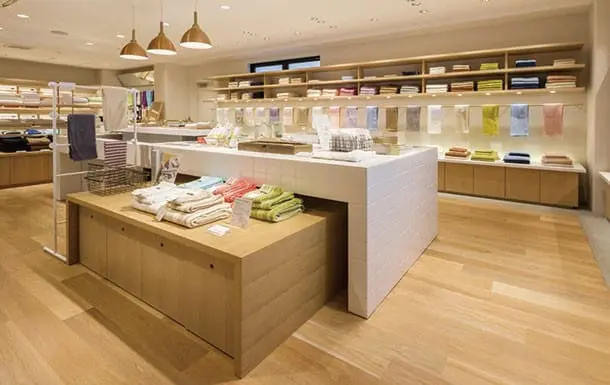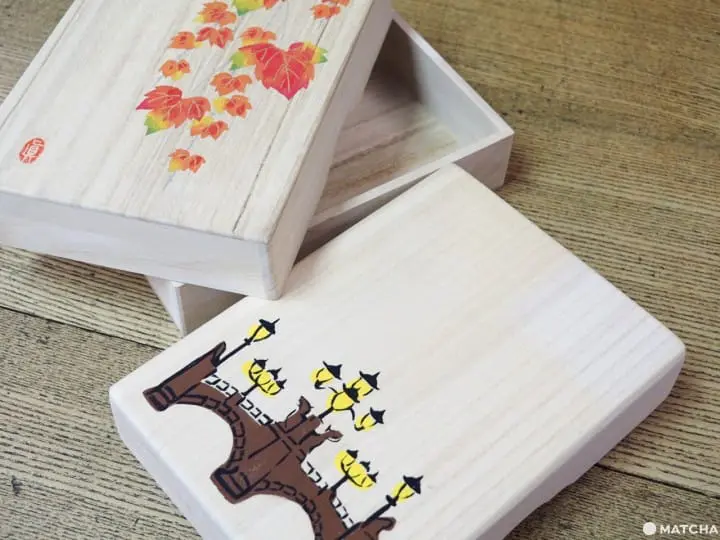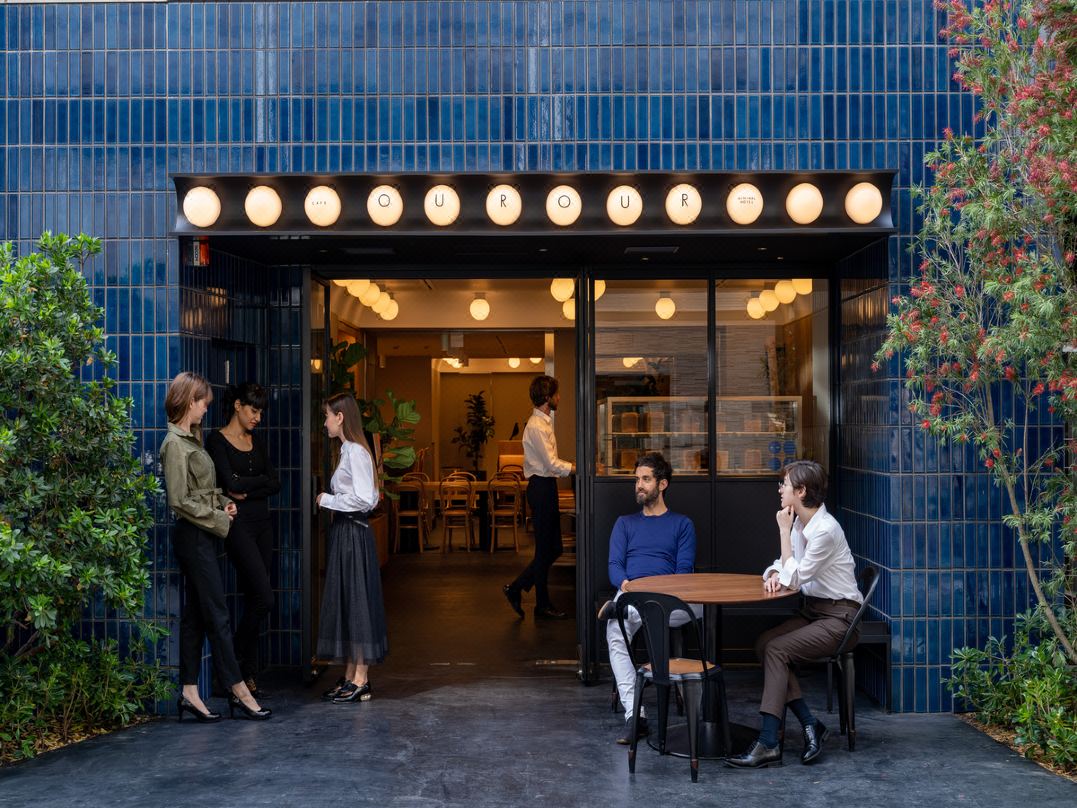Nihonbashi, Central Tokyo: 20 Things to Do, Dining, Shopping, and More

Nihonbashi, Tokyo's main financial hub, is known for landmarks such as the historical Nihonbashi Bridge, the Mitsukoshi department store, and the Bank of Japan. Read on to learn what to do in Nihonbashi, from exploring traditional eateries to visiting artisan shops and unique lodgings.
Although Tokyo's Nihonbashi district may not sound like a place for shopping or indulging in delicious food, it actually has many new shopping centers that combine tradition and modernity.
The prices at restaurants are not as expensive as you might think, and even the accommodations are unique. We invite you to explore the more sophisticated side of Nihonbashi with 20 things to do and places to visit.
Nihonbashi: 20 Things to Do and Travel Tips
Nihonbashi Overview: History and Landmarks
Nihonbashi Dining and Culinary Delights
1. Kaneko Hannosuke
2. Nihonbashi Dashi Bar
3. Imoya Kinjiro: Sweet Potato Sticks
4. La Paix
5. MIKADO Coffeee
6. Bunmeido
7. Pokemon Cafe
Places to Visit in Nihonbashi
8. Art Aquarium
9. Benzaiten Shrine
10. The Bank of Japan
Shopping in Nihonbashi
11. Mitsukoshi Department Store
12. COREDO Muromachi
13. Kinokuniya: Quality Supermarket at Nihonbashi Takashimaya
14. Ozu Washi: Japanese Paper Specialty Store
15. Haibara Washi Paper Shop
16. Yubendo: Japanese Stationery
Unique Hotels in Nihonbashi
17. CITAN: Cafe, Bar, and Hostel
18. Hokutosei: A Train Hostel
19. IRORI Nihonbashi: Hostel and Kitchen
20. K5 HOTEL
For Additional Travel Tips: Tokyo Chuo Tourist Information Center
Recommended One-Day Itinerary in Nihonbashi
Nihonbashi Overview

"The Fifty-Three Stations of the Tokaido: Nihonbashi in the morning" by Utagawa Hiroshige. Photo from Pixta
The name of Toky's Nihonbashi district comes from Nihonbashi Bridge. Completed in 1603, the first year of the Edo period (1603-1868), and rebuilt several times afterward, this bridge served as the starting point of the five major roads across Japan.
Back in the Edo times, the Nihonbashi area bustled with merchants, fishermen, artisans, but also feudal lords, and samurai on their way to or returning from western Japan.

Statues on Nihonbashi Bridge. Photo from Pixta
Nihonbashi has been a vital hub for Tokyo's commerce and finance since the Edo period. It is home to Japan’s first department store, Mitsukoshi, which still stands in the district's center.
Historic buildings, such as banks and department stores, continue to contribute to the city's prosperity—blending past historical traces with modernity. A stroll here allows you to experience the rich history and contemporary vibrancy of Tokyo.
1. Dining in Nihonbashi
Nihonbashi is home to various gourmet restaurants, including the renowned tempura restaurant Kaneko Hannosuke, the long-established MIKADO Coffee, which also has a branch in Karuizawa, and the Michelin-starred restaurant La Paix, which offers affordable lunch sets.
1. Kaneko Hannosuke

Photo by bryan...
Kaneko Hannosuke offers must-try tempura delights with eternal queues outside the storefront.
The menu features the Edomae Tendon, with options to supersize or add a bowl of miso soup. A bowl of tendon includes shrimp, squid, half-cooked egg, seaweed, and the star of the show: conger eel. The aroma of sesame oil, generous servings, and crispy textures make the meal irresistible.
2. Nihonbashi Dashi Bar: Sample Warm and Healthy Cuisine!

Japanese broth is mainly made by simmering ingredients like kombu (kelp), bonito flakes, and vegetables. It's also used in various Japanese dishes.
Nihonbashi Dashi Bar is a store dedicated to Japanese broth, where you can purchase various broth packets and shaved bonito flakes on the spot! Of course, you can taste freshly cooked, healthy broth served with rice cakes, which warms you up and leaves a sweet aftertaste.
↑ Return to the top of article.
3. Imoya Kinjiro: Snag Some Sweet Potato Sticks

Sweet potato strips, known as "zarigani" in Japanese, involve cutting sweet potatoes into thin strips, frying them, and then coating the sticks with syrup.
At Imoya Kinjiro, olive oil is used for frying to preserve the crispy texture and authentic flavor as much as possible.
Additionally, the shop claims not to sell sweet potato strips that have been fried for over 12 hours, emphasizing the importance of freshness. They also offer purple sweet potato ice cream on-site!
4. La Paix: Michelin-Starred Restaurant with Innovative French Cuisine

Many likely associate French cuisine with foie gras and truffles. However, La Paix takes a creative culinary approach by blending local ingredients into every dish while preserving the essence of French cuisine.

The exquisite presentation is another crucial point that enhances the dishes. La Paix serves its meals with a minimalist, aesthetically pleasing style of plates and tableware.
↑ Return to the top of article.
5. MIKADO Coffee: Popular Among Tokyo's Office Workers

Founded in 1948, MIKADO Coffee is a well-known coffee shop in the Nihonbashi district.
Many office workers and locals frequently come here to relax and chat, ordering popular items like mocha espresso ice cream or iced coffee with extra acidity. The rich, bitter flavor makes it a favorite among those who have tried it.
6. Bunmeido: A Historic Shop Selling Nagasaki Castella Cakes

Founded in 1900, Bunmeido is one of Japan's leading brands for Nagasaki castella cakes, with a history spanning over a century.
They adhere to traditional methods and avoid using additives, crafting each confection by hand. The result is a deliciously sweet treat. Interestingly, the founder was the first person in Japan to sell products in person at department stores.
7. Pokémon Cafe at Nihonbashi Takashimaya

The Takashimaya department store may give the impression of luxury and exclusivity. However, in recent years, it has been actively transforming to attract younger consumers.
The Pokémon Cafe, for instance, is located on the 5th floor of Takashimaya S.C. East Building. Despite the need for advanced online reservations, it's an irresistible attraction!
If you're only interested in purchasing merchandise, you can also lose yourself in the Pokémon Center TOKYO DX, located on the same floor.
↑ Return to the top of article.
Must-Visit Places in Nihonbashi
The Nihonbashi district is known for its convenient location, often hosting large temporary exhibitions. It's also where you can explore attractions that showcase the Edo Period's atmosphere and find various prefectural "antenna shops" selling regional food and drinks.
8. Art Aquarium: An Otherworldly Atmosphere of Goldfish and Art

For 14 consecutive years, the Art Aquarium has been a summer limited-time event in Nihonbashi. It features aquarium art with traditional Japanese-style tanks, lighting, projections, and the latest technology to showcase the beautiful goldfish as the stars of the show.

The Art Aquarium allows visitors to experience various sensory elements such as light, sound, fragrance, and taste while appreciating the four seasons portrayed in art.
The museum has also expanded to recreate the Flower District from the Edo Period, and the highly anticipated Oiran Dochu procession with courtesans (oiran) in the form of goldfish aquarium art.
Address: Tokyo, Ginza, Chuo 4−6−16 Mitsukoshi New Building 9F
Access: About a 7-minute walk from Nihonbashi Station
Official Website: https://artaquarium.jp/
9. Benzaiten Shrine: Try Money Washing for Prosperity

At Benzaiten Shrine, dedicated to the deity Benzaiten who governs the arts and wealth, you can cleanse your money!
By soaking your money in water and wiping it off, it's believed the cleansed money will bring you good fortune when placed in your wallet. Additionally, you can purchase hanging charms shaped like turtles to serve as protective lucky charms.
10. The Bank of Japan: A Headquarter with 100 Years of History

The main building of the Bank of Japan has been erected over a century ago. This neo-Baroque architectural masterpiece designed by Kingo Tatsuno—the same architect who designed the Tokyo Station—is considered an important cultural asset.
Visitors can arrange free tours by appointment to explore the interior, which includes the underground vault, the former banking hall, and a historical exhibition area. Every corner exudes a classical atmosphere. Moreover, you can find special souvenirs that are exclusive to this location.
↑ Return to the top of article.
Shopping in Nihonbashi
Nihonbashi is home to long-established stationery shops and stores exuding an authentic Japanese atmosphere while showcasing traditional craftsmanship.
For example, there's Haibara, which has been in operation for over 200 years in Nihonbashi, and stores like Yubendo, which has provided natural mineral pigments and various writing materials for over a century.
In recent years, there's also Ozu Washi, which collaborates with Ginza Itoya to actively introduce people to the charms of washi paper. All of these are located in the vicinity of Nihonbashi.
Nihonbashi Mitsukoshi Main Store: Japan's First Department Store

Photo from Pixta
Mitsukoshi is the first department store established in Japan. Its roots go back to Echigoya Gofukuya, a kimono merchant's business established in 1755 with its main store in Nihonbashi.
The Nihonbashi Mitsukoshi Main Store is home to a wide variety of shops targeted at an adult clientele with refined tastes. There are several galleries within the store that host art events and exhibitions.
The coffee shops and restaurants within Mitsukoshi are excellent, offering a wide variety of dishes that can be enjoyed casually or on special occasions.
12. COREDO Muromachi

Photo from Pixta
COREDO Muromachi is a stylish shopping complex consisting of three buildings, each designed to evoke the atmosphere of the Edo Period. The shops inside offer a mix of Japanese and Western items, including traditional ware decorated with gold leaf, cutlery, Japanese tea, and international cuisine.
The architecture of the COREDO Muromachi structures makes innovative use of Japanese crafts such as traditional lanterns and glasswork.
In addition to shops, there are dining facilities, cozy cafes, and rest spaces where visitors can take a break while watching the bustle of the city. Fukutoku Shrine, a small beautiful shrine located in the precincts, is a picturesque highlight of this area.

If you're looking for a quality Japanese souvenir, we recommend Imabari towels, which you can find at Iori - Coredo Muromachi Store.
Imabari towels, a famous artisanal product of Ehime, boast excellent absorbency, quick-drying properties, and a soft, fluffy texture even without the use of softeners, making them highly sought-after. Each towel undergoes the Imabari Towel Certification, and their delicate touch has won over many, making them a popular souvenir from Japan.
↑ Return to the top of article.
13. Kinokuniya: Quality Supermarket at Nihonbashi Takashimaya

Additionally, on the first floor of Takashimaya's new building, you'll find the Kinokuniya supermarket, which offers high-quality everyday food products.
Here you can find curry buns and seasonings from all over Japan. You'll also find a branch of Nihon'ichi, a brand developed by the famous Nakagawa Masashichi Shoten umbrella, offering a collection of souvenirs with designs inspired by Japan's regions.
Location: Google map
14. Ozu Washi: Washi Specialty Store

With a history spanning over 360 years, Ozu Washi grew from a small shop in the Edo period to the three-story establishment that it is today.
Visitors can experience the traditional process of Japanese papermaking here, crafting their own unique washi paper. Of course, they also sell a variety of washi paper for everyday use and offer trial writing sessions, allowing you to experience the different textures of various types of paper
↑ Return to the top of article.
15. Haibara Washi Paper Shop: Highly Acclaimed in Japan

Haibara not only sells high-quality washi paper but is also committed to promoting washi internationally. Despite the reduced demand for modern washi compared to the past, they continue to design washi products that meet the needs of the times, appealing to creative young people who seek new and innovative items.
Among their most popular products is the Chiyogami series, a type of gorgeously decorated paper used for notebook covers and desk calendars; this type of paper reinterprets the patterns handed down from the Meiji era (1868-1912) in a modern style. Many people collect the entire series.
Hotels near Haibara Nihonbashi Main Store
16. Yubendo: Providing Practical and Convenient Stationery for a Century

For over a century, Yubendo has been providing handmade, hand-painted stationery, postcards, and various products using colorful and rare natural mineral pigments. Their original hand-painted Nihonbashi paulownia boxes and bookmarks created by skilled artisans have attracted many customers who appreciate unique styles.
In the past, their main products were high-quality handcrafted brushes, Japanese paintings, and ink paintings on specialized paper. As times have changed and artisans have become scarce, they have now introduced practical stationery items like notebooks, postcards, and red envelopes with delicate designs that still carry a traditional aesthetic.
Hotels near Yubendo
↑ Return to the top of article.
Unique Hotes in Nihonbashi
17. CITAN: Cafe, Bar, and Hostel

CITAN is a hostel that caters to travelers looking to save on accommodation expenses while still enjoying quality sleep and indulging in fine wine and coffee.
At night, it transforms into an elegant bar serving delightful dishes like Japanese-style fried chicken with tartar sauce, baked vegetables, and creamy figs. Even if you're not staying here, you can drop by for a drink!
18. Hokutosei: A Train Hostel

The sleeper train Hokutosei was Japan's original luxury sleeper train that connected Tokyo, Ueno Station, and Sapporo Station in Hokkaido. It has since been retired and no longer operates.
However, to allow railway enthusiasts to continue experiencing and learning about the Hokutosei train, there is a hotel located near Nihonbashi that uses the beds and reading lights that were once used on the train, creating an atmosphere reminiscent of the past.
Even the kitchen is converted from a former lounge. If you love Japanese railways, this is a must-visit destination to spend a night!
↑ Return to the top of article.
19. IRORI Nihonbashi: Hostel and Kitchen

The name of this guest house, Irori is derived from the Japanese word for hearth. The owner hopes that this place can be a gathering spot for travelers to gather around the hearth, keep warm, savor authentic Japanese cuisine, and engage in lively conversations.
All the furniture and hardware are sourced from Japan, with a focus on showcasing their origin and unique features. Who knows, you might get inspired to embark on a local adventure the next day!
20. K5 HOTEL

Pictures courtesy of PR TIMES
K5 Hotel offers a unique experience where you'd want to invite friends for a coffee or drinks. Located in Nihonbashi-Kodemmacho, once known as Japan's Wall Street, it is housed in a renovated bank building completed in 1997.
The hotel's second to fourth floors house guest rooms, while the first floor and basement feature a multifunctional dining space, including the popular coffee shop SWITCH COFFEE and the Brooklyn Brewery beer bar from New York. The overall design combines modernity with a touch of tradition, creating a beautiful and inviting ambiance.
↑ Return to the top of article.
21. For Additional Travel Tips: Tokyo Chuo Tourist Information Center

If you encounter problems while traveling and don't know what to do, or if you want to buy various tickets but have language barriers or don't know where to purchase them, visit the Tokyo Chuo Tourist Information Center.
It's located on the underground first floor of the commercial complex Kyobashi Edograndnear Nihonbashi Station. You can also take advantage of the free shuttle bus service called Metro Link, which runs from Tokyo Station to the Nihonbashi area.
Recommended One-Day Itinerary in Nihonbashi
Start your day at MIKADO Coffee, which offers a classic tearoom-style breakfast. Afterward, you can visit Koami Shrine to pray for good luck and fortune.
Around 11:00 during the summer, you can experience modern and traditional Japanese art at the Art Aquarium, where you can enjoy the sight of countless beautiful goldfish. For lunch, you can make a reservation at the Michelin-starred restaurant La Paix to savor high-quality French cuisine with a Japanese twist.
In the afternoon, explore three historic stationery and paper goods stores for souvenirs. When you need a break, head to Bunmeido for an elegant afternoon tea featuring Nagasaki's famous castella cakes.
For dinner, consider joining the queue at the original location of Kaneko Hannosuke for delicious tempura.
↑ Return to the top of article.
Visit Nihonbashi, the "Center of Japan"
Nihonbashi not only serves as a hub for various prefectures' specialty product stores but also retains its historical charm and architecture.
Over time, it has adapted to modern needs with a wide range of culinary delights and artisanal products. A visit to Nihonbashi is sure to immerse you in its unique blend of old and new, showcasing a timeless allure.
Read also
Main image by Pixta















































![[Northern Okinawa] 4 Recommended Cosmos Fields in Okinawa | Sunflowers and Cherry Blossoms in the Same Season!](https://resources.matcha-jp.com/resize/720x2000/2024/08/12-192028.webp)



![[Corporate Visit List] Near Kansai Airport! Discover Japan’s Technology and Business Philosophy through Industrial Tourism](https://resources.matcha-jp.com/resize/720x2000/2024/12/13-215168.webp)